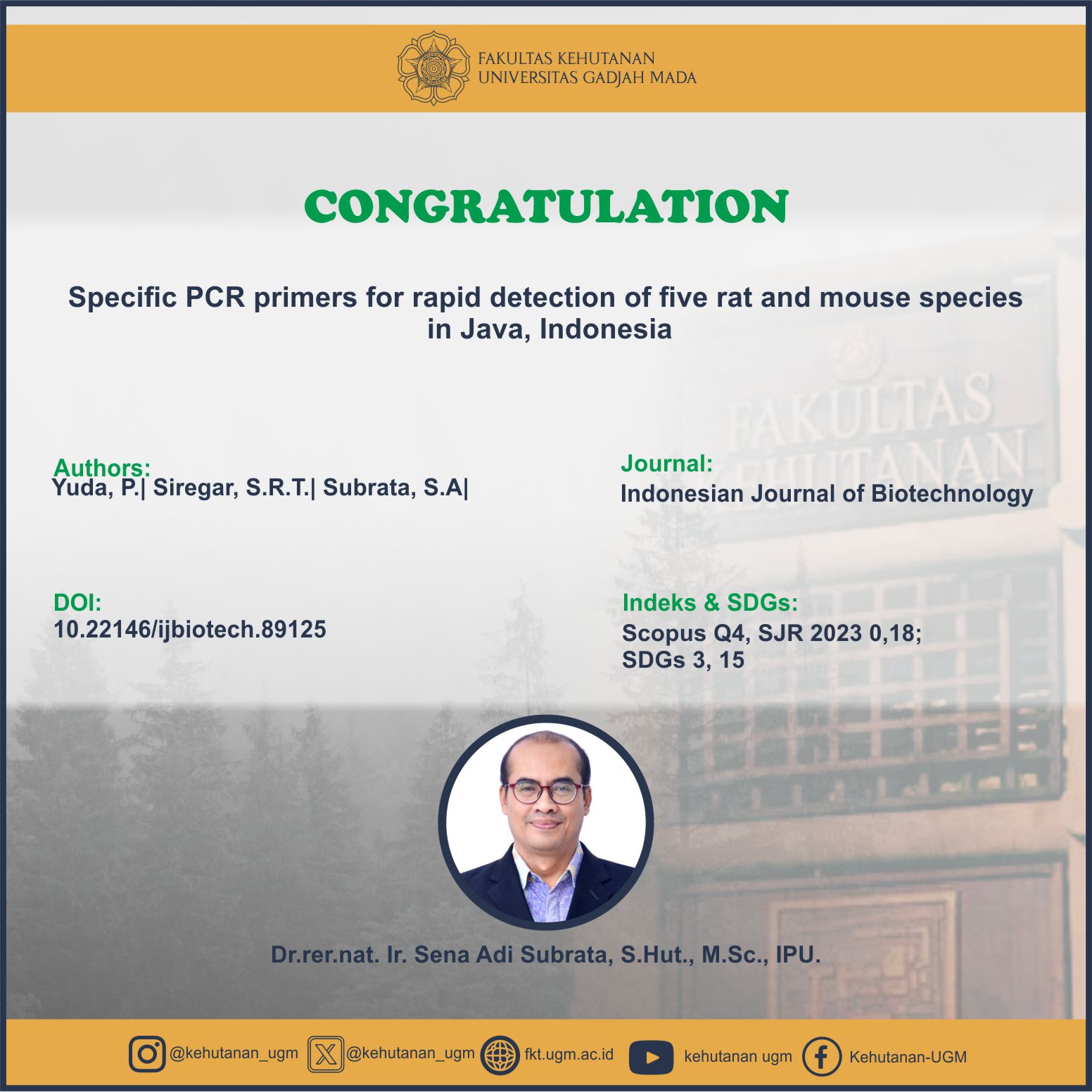
Abstract
Identifying rat and mouse species quickly, affordably, and accurately is crucial for effective populationmanagement, as well as for eradication or conservation purposes. However, the sheer diversity of these species poses achallenge. To address this, a molecular approach has been developed, involving the amplification of a short genetic markerfrom materials commonly left by the animal, such as hairs and feces. Recent available PCR primers were not suitable for thesurveillance of large sample sizes. As a solution, this study designed and validated a PCR primer set capable of detectingfive species of rats and mice (Mus musculus, Rattus tanezumi, Bandicota indica, Rattus tiomanicus, andRattus argentiventer)commonly found in Java, Indonesia. The specific primers were derived from thecytochrome c oxidase subunit 1 (COI)gene,designed using the SP‐Designer V7.0 application, and validated using both in silico andin vitromethods. The validationresults demonstrated that all five pairs of primers were highly specific, generated correct amplicons, and successfullydetected the five distinct species present in a Javan mongoose feces sample. These findings are significantly important asthey enable the effective detection of rat and mouse species and potentially provide valuable ecological insights from thefield.
SDGs:
SDG 3:Good Health and Well-being
SDG 15:Life on Land
Link Dokumen:
Download
